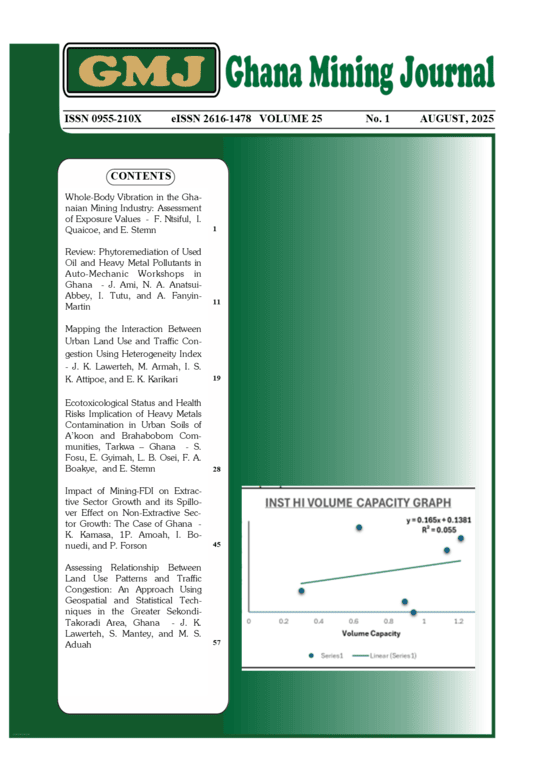ASSESSING RELATIONSHIP BETWEEN LAND USE PATTERNS AND TRAFFIC CONGESTION: AN APPROACH USING GEOSPATIAL AND STATISTICAL TECHNIQUES IN THE GREATER SEKONDI-TAKORADI AREA, GHANA
Abstract
Traffic congestion has become a persistent problem in the Greater Sekondi-Takoradi Metropolis in the Western Region of Ghana. To analyse the traffic congestion and related issues in the metropolis, Geographic Information Systems (GIS) and Earth Observation technology was used to assess the relationship between land use patterns and traffic congestion. Land use data, including residential, commercial, industrial, and mixed-use classes, were obtained and processed to create detailed land use maps. Traffic congestion data, such as traffic flow, speed, and volume, were observed on three different roads and analysed. The results showed that peak hour periods vary on different roads. Kwesimintim to Agyip experienced its peak between 8am-9am, Effiakuma to Tanokrom between 6am-7am, and Market Circle to Agyib between 7am-8am and their respective Peak Hour Factor (PHF) values 0.92, 0.95 and 0.83. Commercial land use contributed the most to traffic congestion in the metropolis, with a coefficient of 0.866 while residential land use had the lowest congestion level, with coefficient of -0.159. The results of this study can inform policymakers, urban planners and transportation engineers in making informed decisions for effective traffic managment, which could impact positively on sustainable urban development in the Greater Sekondi-Takoradi Metropolis.
Downloads
Published
Issue
Section
License
Copyright (c) 2025 Joel Kwabena Lawerteh, Isaac Selasi Kojo Attipoe, Michael Soakodan Aduah

This work is licensed under a Creative Commons Attribution 4.0 International License.
Copyright © 2021 University of Mines and Technology (UMaT), Tarkwa. Ghana

